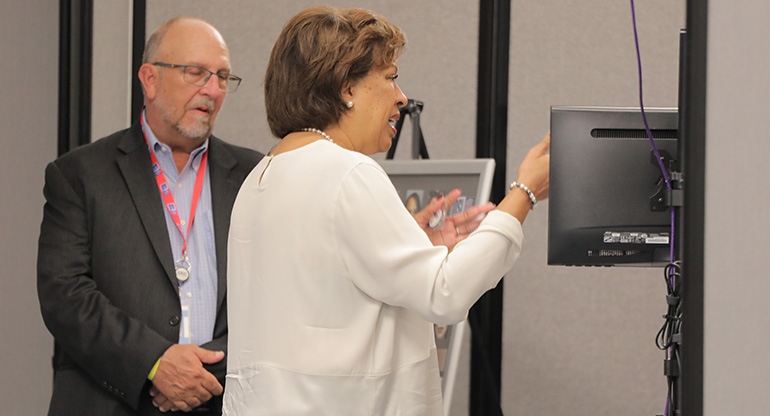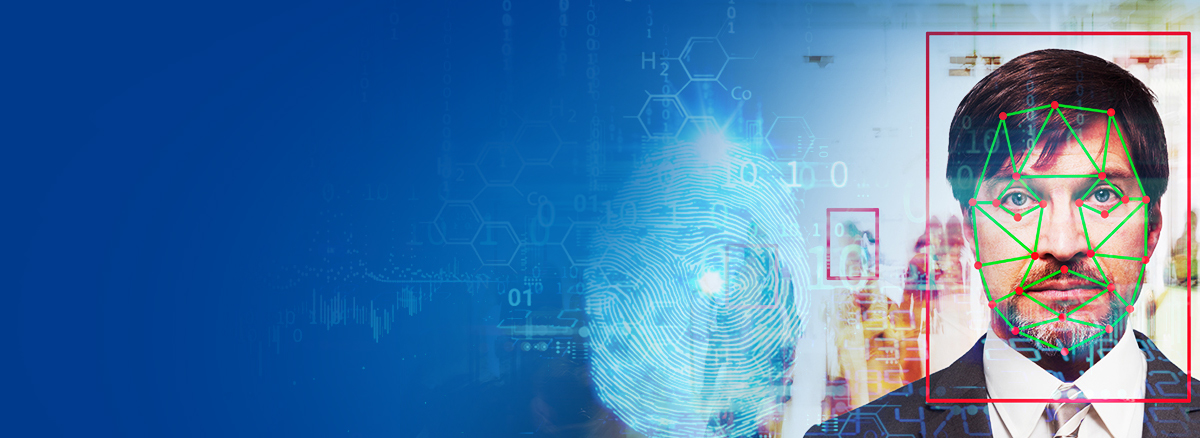Key Takeaways:
- SAIC’s Identity and Data Sciences Lab (IDSL) tests and evaluates AI-based biometric technologies, ensuring they perform efficiently, effectively and equitably for DHS agencies.
- The IDSL supports the Department of Homeland Security by conducting real-world pilot projects and evaluations of biometric technologies, improving security processes at border crossings while streamlining travelers' experiences.
- With a team of experts and a history of collaboration with DHS, IDSL has pioneered biometric testing advancements, contributed to international standards and been recognized for innovations by the U.S. Commission on Civil Rights and the National Academy of Sciences.
LISTEN TO THIS BLOG:
Every day, Department of Homeland Security officers across the U.S. rely on technology tools to inspect or screen more than 2 million air travelers, including biometrics. SAIC’s Identity and Data Sciences Lab (IDSL) puts these technologies through their paces at our Maryland Test Facility (MdTF) and additional locations around the U.S., ensuring they perform efficiently, effectively and equitably.
Sponsored by DHS’s Science and Technology Directorate (DHS S&T), our lab provides independent testing and evaluation of commercial AI-based biometric and identity products for DHS and its components such as Customs and Border Protection and the Transportation Security Administration.
As a trusted partner between biometric technology vendors and federal government users, the IDSL team:
- Recruits and hosts a diverse population who give their consent to try out new technologies.
- Evaluates AI-enabled biometric sensors and algorithms to see how effectively, efficiently and equitably they collect and handle data.
- Examines human factors—whether volunteers are receptive and responsive to the technologies.
- Determines how well the technologies stand up to real-world operating conditions. The team also plans and conducts pilot projects and field tests.
- Develops or recommends improvements to the concepts of operations, or CONOPS, for biometric operations.
- Briefs customers on product test results and expedites knowledge sharing across government and industry.
“We are a proving ground, helping DHS understand which biometric technologies will work in public-facing environments,” said Jerry Tipton, SAIC program manager and IDSL's director. “DHS S&T shares our reports and other knowledge products with DHS components and other federal agencies like the FBI, and once the information is made public, vendors use it to improve their products.”
Making security efficient and reliable
DHS deploys biometric technologies, like face recognition, to modernize security and improve the passenger experience not just at airports but also at land crossings and seaports. Security officers benefit from more automated and robust verification processes to meet evolving threats and rising travel volumes.
The IDSL team at the MdTF is at the forefront supporting these initiatives. It has worked with face, fingerprint and iris recognition systems that are now in use. The team serves as a trusted third-party expert in biometric sensors and algorithms, data analytics and human factors in the testing and evaluation (T&E) services market.
Tipton credits the IDSL’s success to the robust T&E processes and infrastructure that the team of data scientists, neuroscientists, human factors experts, software engineers and systems engineers—many with intelligence community, Department of Defense and DHS backgrounds—has built up.
Together, IDSL personnel answer queries about a device or system that could include:
- How fast and accurately does it gather biometric information?
- How well does it perform at different times of the day, under various environmental conditions?
- Does the technology integrate into a security officer’s existing screening or inspection process? Will it perform in an updated process either staffed or unstaffed?
- How will it be accepted by the public? Is it intuitive or intimidating?
All of these are real-world factors affecting the throughput of hundreds of millions of travelers screened or inspected by DHS. As the majority of travelers do not pose security risks, DHS is sensitive to expediting screenings while ensuring security.
We have been a longtime, responsible biometrics advisor to DHS. To date, our 24,000-square-foot facility has welcomed over 4,000 volunteers from 100 countries of origin across five continents to provide their input on identification technologies.

SAIC CEO Toni Townes-Whitley tries out the biometric technologies at the Maryland Test Facility during a recent visit.
The IDSL conducts a variety of small to big T&E projects each year. Large-scale evaluations can last several months and involve a group of products from multiple vendors.
The goal of each test, however, is the same: enhance DHS security operations and make the process as equitable, efficient and hassle-free as possible for citizens.
Recognized innovators and experts
The IDSL has operated the MdTF since 2014. Over this period, the facility has hosted international guests of DHS interested in understanding and replicating the capabilities in biometric and identity research and development as well as T&E the team has pioneered.
The IDSL team holds joint patents with DHS related to phenotype measurement and skin reflectance correction in biometric image capture. Senior members of the technical staff have served as editors of the international standard on quantifying biometric system performance variation across demographic groups, and multiple papers written by them have been published in peer-reviewed journals.
The U.S. Commission on Civil Rights chose to visit the MdTF in support of its report "The Civil Rights Implications of the Federal Use of Facial Recognition Technology" and recognized the work by the IDSL team and MdTF several times, including calling the approach at the facility “a template for real-world [functional reach testing] to ensure it will work in its intended contexts.”
The National Academy of Sciences cited multiple scientific papers produced by the IDSL team in its report "Facial Recognition Technology Current Capabilities, Future Prospects and Governance" and mentioned the MdTF in the context of the lab's recommendations to support research to improve accuracy and minimize demographic biases.
Learn more about SAIC's border innovations
